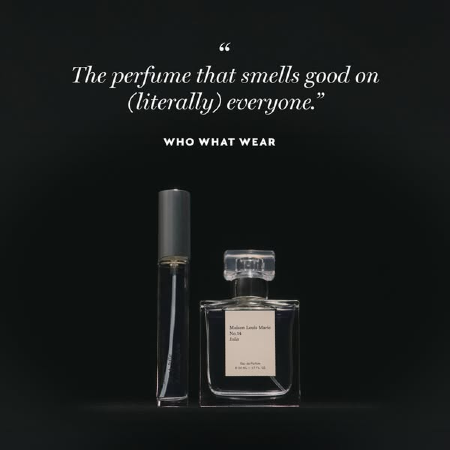Cognitive Tunneling Effect
🧠 Focus the Brain on the 1 Element That Drives 80% of Your Ad’s Impact, Meta’s New Creator Tools, and more


Howdy readers 🥰

In this newsletter, you’ll find:
🧠 Cognitive Tunneling: How to Focus the Brain on the 1 Element That Drives 80% of Your Ad’s Impact
📢 Meta’s New Creator Tools Boost Influencer Ad Campaigns\
🏆 Ad of the Day
If you’re new to ScaleUP, then a hearty welcome! You and 50k+ CEOs, CMOS, and marketers have reached the right place. Let’s get into it, shall we? Oh! Before you forget, if someone forwarded this newsletter to you, don't forget to subscribe to our newsletter so you never miss out!

Together with Poplar
There is a reason Direct Mail has re-emerged as such a powerful marketing channel for performance marketers.
New printing technology, platform integrations, and 1:1 personalization have allowed top brands to leverage the channel in an effective, highly profitable way that was never possible before..
Still, marketers need a solution that integrates all of that for them, giving them the ability to launch, test, measure, and iterate on their campaigns quickly and effectively.
That’s where Poplar comes into play.
Poplar is the leading platform for tech-powered direct mail, used by hundreds of major eCommerce and retail brands like Manscaped and more:
- Lemonade – Leveraged customer data to power direct mail personalization, resulting in a 46% increase in conversions.
- Kettle & Fire – Utilized Poplar for win-back campaigns on lapsed customers, which led to a 15x ROAS and response rate lift of 1.4%
- Knix – Achieved a $10 CPO on retention campaigns using Poplar’s Shopify integration.
With real-time attribution, a powerful Shopify app, and direct Klaviyo integration, Poplar makes it easy for DTC marketers to get up and running quickly and drive profitable Acquisition, Retention, and Retargeting campaigns.

🧠 Cognitive Tunneling: How to Focus the Brain on the 1 Element That Drives 80% of Your Ad’s Impact
The human brain doesn’t process ads equally. It scans, locks in on what feels important, and filters out the rest. That’s where Cognitive Tunneling comes in—the art of designing your ad to direct the brain’s limited attention toward the one element that drives emotion, memory, and conversion.
The best-performing ads aren’t built to say more. They’re built to focus better.
Build Tunneled Creative That Converts in One Second:
✅ Use Visual Hierarchy to Create Instant Focus
Without hierarchy, attention diffuses. Guide the eye using the Hierarchy Rule:
Size + Position + Contrast = Focus
Use off-center placement, bold typography, asymmetry, and whitespace to spotlight a single idea. Make one thing impossible to ignore.
Athletic Greens boosted click-through rates by 27% after simplifying creatives to a single bold value prop headline: “Your entire supplement routine in one scoop.” The rest was white space.
✅ Simplify to Amplify
Cognitive tunneling breaks when you overload. Strip your ad to its emotional core. Remove layered benefits, extra icons, or crowded product shots.
Ask yourself: “If someone sees this for one second, what do I want them to feel?” That’s your filter.
✅ Anchor the Focus on a Cognitive Trigger
Attention sticks when the focal point creates intrigue:
• A visual twist (“coffee in a skincare bottle”)
• A surprising claim (“We sold out in 17 minutes… again”)
• A tension hook (“Skincare for people who hate skincare”)
These embed memory through micro-conflict and curiosity.
This is where tools like Neurons AI help. Top brands use it to identify what the brain subconsciously notices and remembers. Get Neurons & Start Improving Your Ads Today!
✅ Design for the One-Second Outcome
Build your creative around this test: What impression will stick if the viewer sees this ad for just one second? That’s your benchmark. Not the CTA. Not the scroll depth. The imprint.
In a distracted world, the best ads don’t fight for more attention. They tunnel it.
Focus the eye. Anchor the message. Trigger the memory.
Because the brain doesn’t remember everything—it remembers what you made it feel first.

📢 Meta’s New Creator Tools Boost Influencer Ad Campaigns
Insights from Social Media Today
Meta just rolled out major upgrades to its Creator Marketplace, making it easier than ever for brands to find, evaluate, and collaborate with the right influencers. The goal? Maximize branded content performance—especially on Reels, where creators directly impact purchase decisions.
The Breakdown:
- AI-Powered Creator Recommendations - Meta now uses AI to predict which creators will perform best for your brand based on content style, audience match, and past campaign results. It also highlights organic posts that are likely to succeed as paid ads.
- Smart Search by Keywords & Categories - You can now search phrases like “soccer moms with dogs” or “gluten-free desserts” in Instagram’s Creator Marketplace and filter by 20+ verticals like Fashion, Beauty, or Home.
- Interactive Creator Cards & Metrics - Creator profiles now include badges, past campaign history, performance insights, and creator cards with playable Reels—giving brands a quick snapshot of style and engagement. Plus, there's a direct email contact button for easy outreach.
- More Flexibility with API Integration - Meta’s API now supports custom creative assets, existing posts, and click-to-message destinations for partnership ads, making influencer integration seamless.
With 53% of people more likely to buy from a Reel promoted by a creator, these updates empower brands to run smarter, higher-converting influencer campaigns—at scale.

🎥 Ad of the Day

What Works:
Leading with a third-party endorsement from Who What Wear instantly boosts brand trust equity. It’s a strategic application of borrowed authority—a tactic proven to raise purchase intent, especially in beauty categories.
The use of negative space, muted tones, and ultra-simple composition positions the brand as elevated and modern. This is visual semiotics at work—telling consumers “this is a niche luxury scent” without saying it outright.
What Could be Better:
There’s no mention of what notes make this scent unique or why it works on every skin. Adding olfactory descriptors (e.g., sandalwood, amber, skin musk) could provide sensory marketing depth and increase conversion for scent-based products sold online.
Broader Insights:
The ad is designed more for memorability than conversion. It performs well as part of a multi-touch retargeting funnel where education and reviews come next..
For a product like fragrance (which can't be experienced digitally), tapping into experiential copy or visuals—like showing how people react to it or where it's worn—could elevate sensory imagination and desire.

Advertise with Us
Wanna put out your message in front of over 50,000 best marketers and decision makers?

We are concerned about everything DTC and its winning strategies. If you liked what you read, why not join the 50k+ marketers from 13k+ DTC brands who have already subscribed? Just follow this.
At ScaleUP, we care about our readers and want to provide the best possible experience. That's why we always look for ways to improve our content and connect with our audience. If you'd like to stay in touch, be sure to follow us EVERYWHERE🥰
Thanks for your support :) We'll be back again with more such content 🥳

